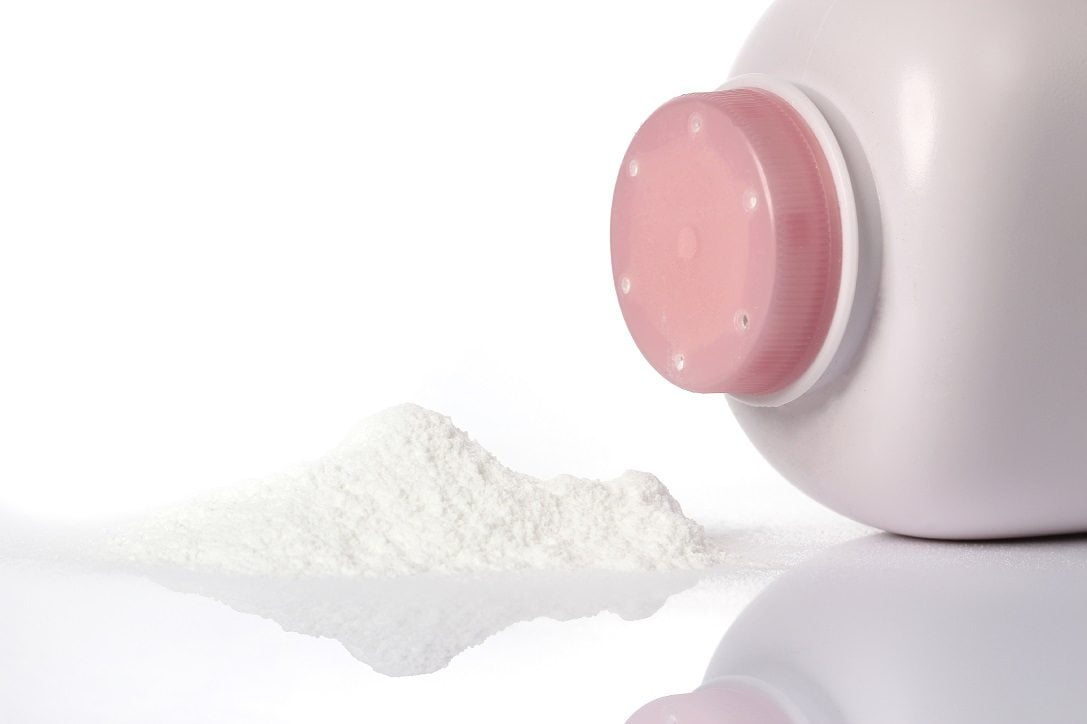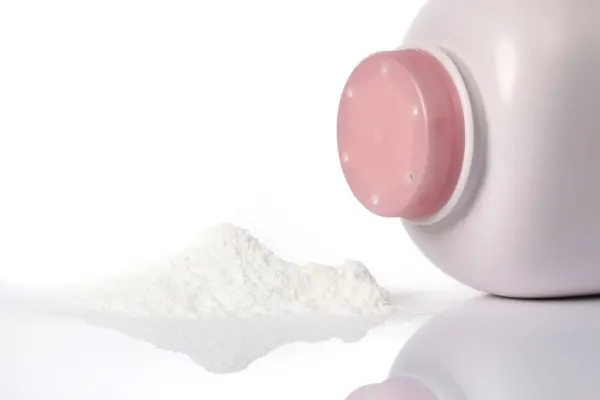For over a century, Johnson & Johnson has touted its baby powder as a product mothers could trust, safe and gentle enough for babies’ delicate skin. The company promotes itself as one that puts its customers first. Although its baby powder is but one of many product lines, baby powder has been central to the company’s image.
Not only has Johnson & Johnson’s baby powder been promoted as safe for infants, but the product has been used on a daily basis around the world. Countless girls and women have used it—and continue to use it—as a feminine hygiene product to keep them “fresh” and “clean-smelling.” In addition to applying the powder directly to their babies’ bottoms and to their own bodies, some users also applied it to their bedsheets. Every time they used the product, they inhaled airborne powder.
For over 45 years, Johnson & Johnson has concealed its knowledge that its baby powder was tainted by asbestos.
According to the New York Times, Johnson & Johnson knew as early as 1971 that its popular baby powder could be contaminated by asbestos, a carcinogen known to cause cancer in humans. Asbestos often appears underground where talc, the key ingredient in Johnson’s baby powder, is mined. Exposure to even trace amounts of asbestos poses a risk of developing cancer, sometimes decades later. Regardless of whether asbestos is applied directly to the skin or its airborne particles are inhaled as it is being applied, it migrates throughout the body.
Until the 1970s, asbestos was widely used in industrial applications, as well as home insulation and car parts. Tests detected the presence of asbestos in talc as early as 1957. The link between asbestos and ovarian cancer was first reported in 1958. By the early 1970s, asbestos was widely considered to be hazardous regardless of where or how it was used.
In the early 1970s, the FDA commissioned a highly regarded scientist to test talc products. He found asbestos in more than half the Johnson & Johnson baby powder samples he tested. Asbestos appeared randomly, and in varying concentrations, in samples taken from the same talc mines. There was no pattern, and no way to predict when it would be present. Johnson & Johnson demanded that the government shield unfavorable findings from the public, and was ultimately assured by the FDA that those findings would remain secret.
Johnson & Johnson did not disclose that it was aware of the possible presence of asbestos in its powder at the time it first discovered the risk. In fact, it was only recently, in response to Freedom of Information Act requests as well as interviews with scientists and lawyers, that Johnson & Johnson’s early awareness of the asbestos risk was revealed to the public.
Since 1971, Johnson & Johnson executives expressed concerns—not simply about the potential health risks posed by asbestos in its talcum powder, but also about a possible government ban on talc, a public backlash, and potential lawsuits if the presence of any asbestos in its baby powder were revealed.
After becoming aware of the asbestos problem, some of Johnson & Johnson’s executives recommended adopting new testing procedures or replacing talc altogether. However, just as the tobacco companies insisted upon the safety of tobacco products long after the scientific community had recognized the connection between smoking and lung cancer, Johnson & Johnson tried to discredit research indicating that its powder could contain asbestos.
In the mid-1970s, Johnson & Johnson attacked the findings of independent scientists that asbestos was present in its product. At the insistence of Johnson & Johnson, the scientists undermined their own findings, asserting that the asbestos tests had been performed on older products and that the existing product was safe. Johnson & Johnson has subsequently obstructed the dissemination of research linking asbestos to its product. To this day, Johnson & Johnson continues to maintain that its baby powder is safe, despite studies and test results to the contrary.
After regularly using Johnson & Johnson’s baby powder, more and more women stricken with ovarian and other cancers sued Johnson & Johnson.
Beginning years ago, more and more women, who had trusted in Johnson & Johnson’s baby powder and used it regularly, developed ovarian cancer. Some were diagnosed with other cancers, such as lung cancer, cancer of the larynx (voice box), and mesothelioma, a cancer of the lining of internal organs that is associated with asbestos. Neither the women nor their lawyers were aware of any connection between the baby powder and asbestos, but the repeated occurrence of cancer among Johnson & Johnson’s baby powder users could not be ignored.
Across the country, over 12,000 talcum powder lawsuits have been filed against the company. This summer, in a Missouri case, 22 women with ovarian cancer won a lawsuit in which they argued that Johnson & Johnson knew about the connection between talc and asbestos, but failed to warn them of the danger. The jury awarded the Missouri plaintiffs a total of $4.69 billion. Because asbestos is an undisputed carcinogen, asbestos-related claims tend to garner a much higher degree of indignation from juries.
One lawyer addressed Johnson & Johnson’s failure to warn its customers about the asbestos in its product this way: which would you choose—asbestos or a safe product without asbestos? With no warning, Johnson & Johnson’s customers were deprived of the right to make that choice.
Before losing the Missouri case, Johnson & Johnson was generally successful in defeating claims connecting talcum powder alone to cancer, without reference to asbestos. Johnson & Johnson challenged research linking cancer and baby powder and presented studies to the contrary. Of six cases that Johnson & Johnson lost on that issue alone, three were overturned on appeal; one appeal is still pending, and one victim won her case but was not awarded any damages. The company is appealing one verdict in another case, for $110 million.
In addition to the Missouri case, Johnson & Johnson lost two other asbestos-related lawsuits, which were filed by people with mesothelioma. The company is appealing all three of these cases. The company has won three mesothelioma cases. Four other mesothelioma cases were declared to be mistrials.
Just recently, Johnson & Johnson agreed to settle a 78-year-old woman’s claim that its baby powder, which she had used over the years, caused her to develop mesothelioma. Johnson & Johnson was prepared to argue that her smoking, and not its powder, caused her cancer. However, as reported in Bloomberg News, the company agreed to pay more than $1.5 million to settle her case.
Johnson & Johnson has continued to argue that its baby powder is asbestos-free, despite evidence to the contrary.
Johnson & Johnson insists that its talcum powder has never contained asbestos and that the claims against the company are based on “junk science.” The company argues that its talc has been tested by multiple scientists from the early 1970s to the present and that no asbestos has been detected in any of these “routine tests.” The company argues that the company’s internal memos revealing asbestos-related concerns have been “cherry-picked,” and that in fact, they demonstrate a focus on safety.
When asked to produce documents in court concerning test results for asbestos in its baby powder, Johnson & Johnson typically responded that it had no relevant information, or that the requests were vague or overly broad. This tactic enabled Johnson & Johnson to avoid having to turn over evidence showing that the company knew its powder was tainted with asbestos, and that it made every effort to conceal that fact. More recently, the company sought to have asbestos-related documents used in court sealed—kept secret and shielded from the public. The company has hired lawyers known for their work in crisis management and created a website extolling talc’s safety.
A recent spate of asbestos-related cases has unleashed volumes of internal Johnson & Johnson documents, prompting new interest on the part of lawyers who represent victims.
Now that the truth is out about asbestos in baby powder, victims’ voices will be heard.
Before it was confirmed that talc may contain asbestos, it was difficult to convince judges and juries that baby powder could cause cancer. The mere fact that long-term baby powder users seemed to have higher rates of ovarian cancer than women who were not regularly exposed does not necessarily prove that baby powder caused cancer. There could be some other factor the victims had in common that simply had not been identified. To succeed in a lawsuit, the victim-plaintiff bears the burden of proving that the defendant’s product caused her cancer.
Now, there is more than a vague correlation between women who regularly used Johnson & Johnson’s baby powder and higher instances of ovarian cancer. Now there is the proverbial “smoking gun”—the asbestos that is a known carcinogen quietly and invisibly turning the powder into a lethal weapon. Moreover, there is evidence that Johnson & Johnson not only knew that its product was tainted by asbestos, but it actively worked to hide that fact from the customers who trusted Johnson & Johnson when they bought its products.
Read more about Talcum Powder lawsuits in Ohio.
If you have been diagnosed with cancer after long-term use of Johnson & Johnson’s baby powder, trust an experienced law firm dedicated to seeking compensation for victims of concealed product defects.
Attorney Jim Slater, the managing partner of Slater & Zurz LLP, began his legal career over 30 years ago by insisting that a business client disclose and eliminate a potentially lethal defect in its products—even though taking that position could have cost him his job. More recently, he has worked with other law firms seeking compensation for victims of “C-8,” a carcinogen as lethal as asbestos that Dow Chemical released into rivers and streams from which drinking water in Ohio and West Virginia originates.
At Slater & Zurz LLP, we take your health and safety seriously. We have a proven record of success in handling personal injury cases. Sometimes we partner with other firms that specialize in particular types of cases to ensure that our clients are in the best position to recover from those who have caused them harm.
If you or a loved one has been diagnosed with cancer after prolonged exposure to Johnson & Johnson’s baby powder, you can count on us to fully assess your claim, answer your questions, and advise you concerning the best way to proceed. Call the dedicated personal injury lawyers for a free consultation. We’re here to serve your legal needs with unwavering dedication and the drive to win.






